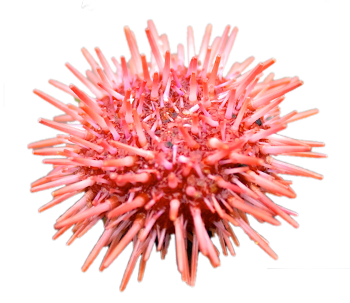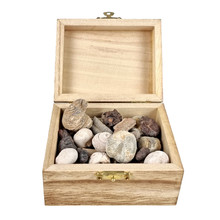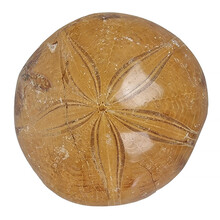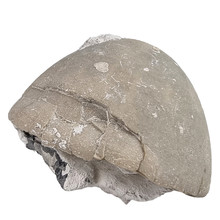Fossil sea urchins or sand dollars from Madagascar. 150 million years old. Read more.
Wooden treasure box with various fossils from Morocco, Brachiopods (shells), Gastropods (snail shells), black ammonite fragments, sea urchin, Orthoceras and Crinoid.
Fossil sea urchins from the closed limestone quarry in Lixhe Belgium. Between 66 and 72.1 million years old (Late Cretaceous)
Fossil sea urchins from the closed limestone quarry in Lixhe Belgium. Between 66 and 72.1 million years old (Late Cretaceous)
Sand dollars
These fossil sea urchins are also called sand dollars. It is a group of sea urchins that, once they are fully grown, live on the bottom of the sea. Only as a larva they can swim around freely, as soon as the round skeleton is formed the sea urchin stays on the bottom.
More than 150 million years old
These fossil specimens come from the Jura era and are between 150 and 200 million years old. These sand dollars are found in Madagascar. Typical for this species is the five finger-like petals. These are actually pores with which the animal can move.
Living fossils
It is remarkable that the animals did not get extinct. After hundreds of millions of years, they still occur in our seas in an almost unchanged form.














